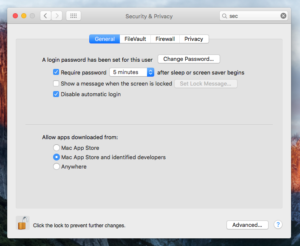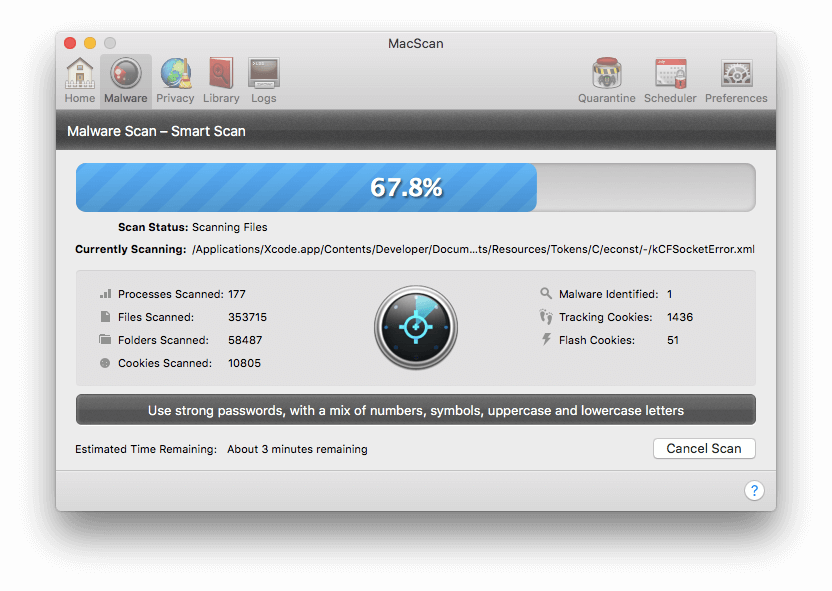Check For Malware On Mac
May 10, 2016 Extensions and toolbars are a common way for malware and viruses to get into your Mac. Use free Malware and Virus checking software. The best free software we have found to detect malware on your Mac is Malwarebytes. This software is remarkably easy-to-use, and can be run once or twice a week to check for any malware on your Macintosh based. Malwarebytes for Mac is a popular and respected anti-malware tool for Mac that can help to clear a Mac of malware, ransomware, and viruses. While users can follow some simple tips to protect a Mac from viruses and trojans, and MacOS is fairly secure as-is from malware, junk ware, and adware, many Mac users often ask how they can scan their Mac for adware or for viruses.
Stay safe from virus and malware activity on your Macintosh with these simple tips.
Do you think your Mac has been infected by malware or a virus? It’s always possible, and here’s some ways to check.
Is it a virus? Is it malware?
First of all, don’t blame every single problem on malware or a virus. Many problems on the Mac appear to be virus related, but, actually are system related. If you’re not surfing underground sites or downloading software from places you shouldn’t, you shouldn’t have any virus or malware activity. In the off chance that you do get a virus or malware, here are some basic things you should do to get rid of the malware or virus on your Mac.
Let’s start with the browser.
On the Macintosh, you have a few choices for web browsers. The big three browsers that most people use are Google Chrome, Safari, and Firefox. Of these particular browsers, we prefer Google Chrome as our day-to-day browser. Google chrome for Mac is a fairly lightweight browser, has great security controls, and doesn’t seem to have the issues that the other browsers tend to have. Another great feature of Google Chrome is that it has Adobe Flash built right into it. This means you’re not hounded by the constant warnings to upgrade Adobe Flash. This is not to say Safari and Firefox are not safe, we just have a better track record with Google Chrome across-the-board. It’s wise to be careful what extensions you do load into Google Chrome. Only stick to known good browser extensions that are featured on the Google app store. if you do need to stick to using Safari as your daily web browser, you should turn off the extensions. Extensions and toolbars are a common way for malware and viruses to get into your Mac.
Use free Malware and Virus checking software
The best free software we have found to detect malware on your Mac is Malwarebytes. This software is remarkably easy-to-use, and can be run once or twice a week to check for any malware on your Macintosh based computer. We’ve been surprised a few times to find that we actually did have malware and the software has found it and deleted it every single time. This software doesn’t run automatically; you will have to run it by yourself once in a while. Another great piece of software we have found the check for viruses and malware on a Mac is from the company Sophos. This free software does run continually on the Macintosh and is also a good, lightweight piece of software for checking viruses and malware on a Mac. Apple can also detect and defeat certain malware from their end which is built into the Macintosh operating system. This is obviously not the best option because you have no control over what it finds and what it gets rid of.
Backing up your data is a wise move

With good data backups, a good portion of malware and viruses shouldn’t affect your data. Even better, have multiple backup options so your main data backup doesn’t get infected. We prefer multiple hard drives, and Google Drive as our backup options. Apple provides the Time Machine software that can back up every single Mac for free. All you have to do is provide an external hard drive for this option to work.
Be incognito whenever possible
Most browsers today offer an incognito mode, Or stealth mode, which hides your browsing activities. If there are sensitive sites you travel to, using one of the stealth modes may help limit the malware and virus activity on your Mac. The stealth mode can stop tracking and automatically turn off cookies on these sites as you visit them, which aids in your protection.
Stay away from filesharing and torrent sites
A lot of virus and malware activity on a Mac comes from filesharing and torrent sites. You should limit access to the sites if at all possible, especially if other family members are using the Mac. A good option in this case is to use a DNS filtering service such as OpenDNS to stop people in your household from accessing these and other dangerous sites.
Everyone should not be an administrator on the Mac
If your Mac has multiple users, and all them are set up as a administrators, this is not a good situation. This simply means that anybody using the Macintosh has full privileges on the Mac. They would actually be able to install any piece of software, including malware, that they deemed fit. Changing these users to standard users is a great way to bypass this problem. By making them standard users, they don’t have the privileges that an administrator would have. Therefore, they would not be able to make any changes on the system at all. By teaching these users good browsing habits, you should be able to limit the amount of malware and virus activity on your Mac.
Please consider a small and secure donation if this post helped you with your issue!
Fileless Detection

Find and block malicious software hidden outside of files.
Custom Scan Options
Choose the extent of the scan - quick, full, or custom.
Broad Compatibility

Use our stand-alone, browser-independent application to avoid compatibility concerns.
Smart Scan
Get the latest protection with reduced download times.
Review and Restore
Check and compare scan results and recover files.
Enhanced Detection and Cleanup
Deal with sophisticated threats – even rootkits – on all your home network devices.
HouseCall for Windows
How To Check For Malware On Mac Os X
With threats changing more rapidly than ever before, and hackers now attacking all sorts of devices, many security companies have trouble keeping up. HouseCall can quickly find new threats on your computer for free without getting in the way of your existing security software.
HouseCall for Mac
As threats become harder to detect and harder to clean, your Mac needs protection more than ever before. You can count on HouseCall to keep malicious files off your Mac and stop them from spreading.
HouseCall for Mobile
Check My Computer For Malware
The free HouseCall mobile app not only finds security threats lurking on your Android device, but also provides a free 30-day trial of the premium features available in Trend Micro Mobile Security.